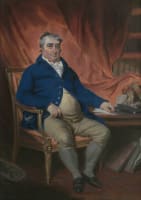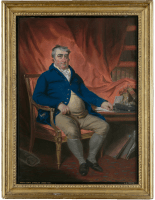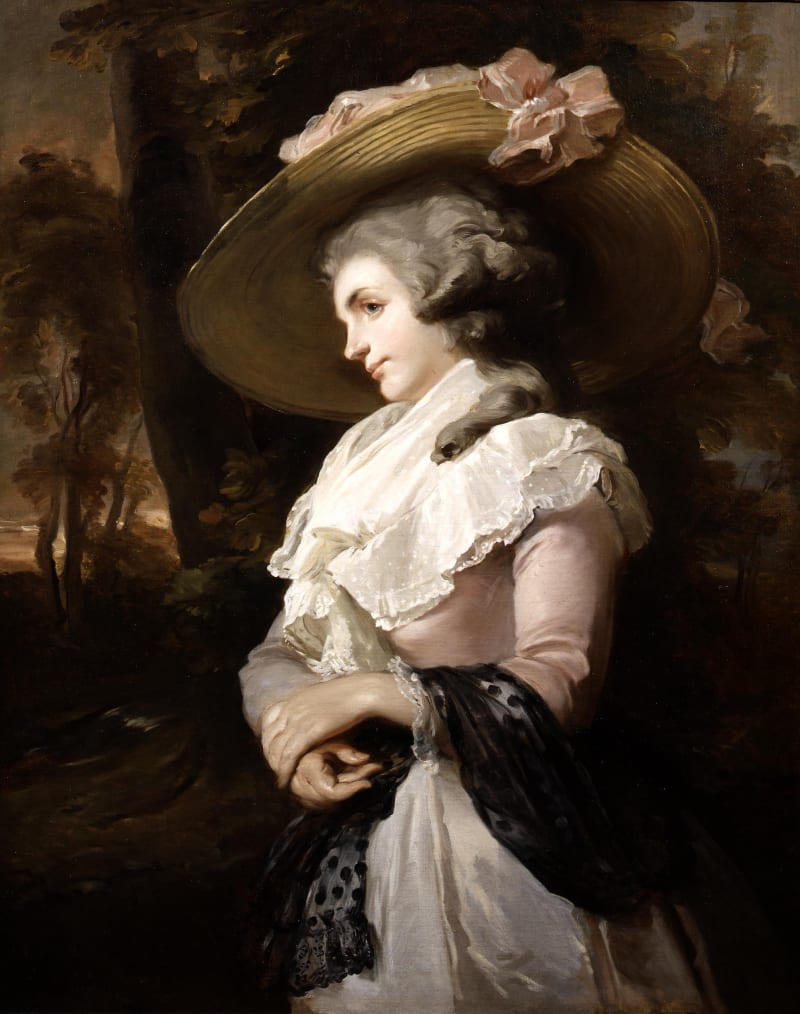

John Raphael Smith
(1751-1812) Portrait of the Whig Statesman Charles James Fox (1749-1806)Provenance
James Thursby-Pelham;
Mrs Guy Argles, and thence by descent;
Christies, London, 7 November 1995, lot 60;
Private collection, U.K..
Christie’s, London, 3 June 2004, lot 50;
Collection of Tony Banks MP, U.K.;
Bonhams, London, 3 May 2007, lot 38, sold by the above;
Private collection, U.K., acquired from the above;
Philip Mould & Company, London, acquired from the above 2013.
Literature
Ralph Edwards, (1934) 'J. R. Smith and his pupils' in Connoisseur, XCIII, pp.98-9, illus. p.101.
Exhibitions
Possibly Royal Academy of Arts, London, 1802, no. 346.
This pastel portrait of the celebrated Whig radical, Charles James Fox is possibly that exhibited at the Royal Academy of 1802 by John Raphael Smith.
John Raphael Smith was born in Derby in 1752 and was apprenticed initially to a linen draper. He began painting miniatures and scraped his first mezzotint in 1769, eventually becoming the most celebrated engraver of the period.
On abandoning mezzotint engraving in 1802, Smith devoted himself exclusively to portraiture in pastel. This provided him with a lucrative practice, drawing some forty sitters a week at two guineas a head. Even when he increased his prices to eight guineas there was no fall in demand.
His patrons included prominent Whigs such as the Duke of Bedford, Lord Holland, and Sir Francis Burdett. Smith's portraits of Fox are considered to be amongst the finest of these. When exhibited at the Academy of 1802, it was described by the Library of the Fine Arts,...
This pastel portrait of the celebrated Whig radical, Charles James Fox is possibly that exhibited at the Royal Academy of 1802 by John Raphael Smith.
John Raphael Smith was born in Derby in 1752 and was apprenticed initially to a linen draper. He began painting miniatures and scraped his first mezzotint in 1769, eventually becoming the most celebrated engraver of the period.
On abandoning mezzotint engraving in 1802, Smith devoted himself exclusively to portraiture in pastel. This provided him with a lucrative practice, drawing some forty sitters a week at two guineas a head. Even when he increased his prices to eight guineas there was no fall in demand.
His patrons included prominent Whigs such as the Duke of Bedford, Lord Holland, and Sir Francis Burdett. Smith's portraits of Fox are considered to be amongst the finest of these. When exhibited at the Academy of 1802, it was described by the Library of the Fine Arts, as at once simple and dignified; in action easy and natural, and in resemblance perhaps the most perfect that has appeared.
The artist subsequently produced several versions of the composition both in pastels and oil. This pastel was executed around 1802, towards the end of Fox's distinguished and turbulent political career. The composition was engraved by Samuel Reynolds and became amongst the best-known images of Fox.





